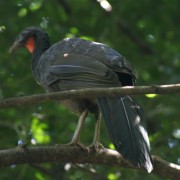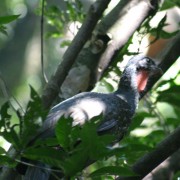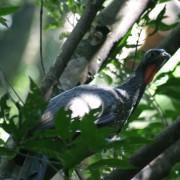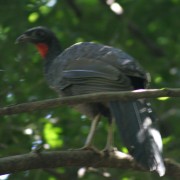Biodiversity
 Rusty-margined Guan
Penelope superciliaris | Temminck, 1815
Rusty-margined Guan
Penelope superciliaris | Temminck, 1815
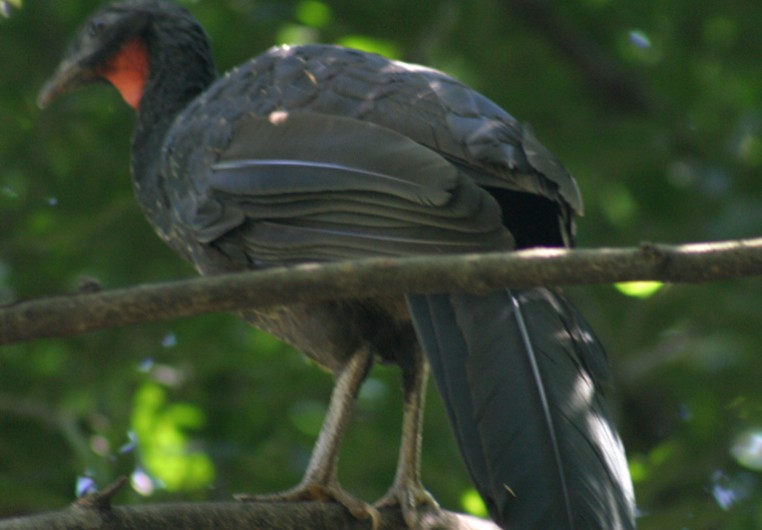
Characterization: They measure 55cm, weigh 850g. They have a rudimentary tuft; their wings have large and distinct rufous edges; their chests have a whitish pattern; and both sexes' irises are red.
Distribution: This bird occurs in southern Amazonas and Madeira, central and northeast, and central eastern Brazil, and Paraguay.
Habitat: It inhabits forests, low areas with new vegetation, and forest patches in the savanna.
Habits: The sign of excitement is it opening and closing its tail impetuously. This bird has a habit of shaking its head. In the evening, before perching, it becomes very restless, and such nervousness is apparently motivated by its anxiety to find a good place to sleep. It likes hot places.
Diet: Fruits, leaves, and buds. It drinks on river banks. When it drinks, it resembles a pigeon, as is suckles keeping its beak in the water, and it is noticeable it is taking the liquid in on account of the rhythmic movement of its throat.
Breeding: Monogamous, the males feed their females, turning and gently lowering their heads, as parents feed their children. The couple caress each other on the head. Little is known about these birds' wedding ceremonies. The pair makes a little nest in the bunched vines, sometimes high in the trees or on branches on the water or with fallen logs; they also take advantage of nests other birds have abandoned. Their eggs are large and uniformly white. The average hatching period is 28 days. Their brood usually adds up to two to three hatchlings.
In the UFRA area: In the studies done at the São Francisco Sugarmill areas, this bird's distribution was limited to wetlands with native forests. It is considered rare because it was spotted only once.




